Ian Buruma's Propaganda in NRC:
China was pionier van het autoritaire kapitalisme
Het bloedbad op het Plein van de Hemelse Vrede in 1989 toont hoezeer China het autoritair kapitalisme wilde behouden, schrijft .
Hoe bloedig was Buruma's 'Bloedbad'? Leest u verder:
"As far as can be determined from the available evidence, NO ONE DIED that night in Tiananmen Square."
If after reading that you're thinking: 'nonsense! that's just a blatant propagandist claim by China's communist party!', you'd be wrong. It was, in fact, Jay Mathews, the Washington Post's Beijing Bureau Chief in 1989. He wrote this article on the topic of the June 4th 1989 Tiananmen square protests for Columbia Journalism Review.
Many western papers have, in fact, occasionally admitted that this report and other similar reports exist, only to go back to the "massacre" narrative, for some unknown reason. For example, in June 13, 1989, NY Times reporter Nicholas Kristoff - who was in Beijing at the time - wrote: "State television has even shown film of students marching peacefully away from the [Tiananmen] square shortly after dawn as proof that they [protesters] were not slaughtered." In that article, he also debunked a sensational article's claim that Chinese soldiers with machine guns simply mowed down peaceful protesters in Tiananmen Square.
A Wikileaks cable from July 1989 also reveals the eyewitness accounts of a Latin American diplomat and his wife: "They were able to enter and leave the [Tiananmen] square several times and were not harassed by troops. Remaining with students ... until the final withdrawal, the diplomat said there were no mass shootings in the square or the monument."
It is true, of course, that about 200-300 people died in clashes in various parts of Beijing around June 4th 1989 - but about half of those who died were soldiers and police officers.
But what about the iconic "tank man"? Well, if you watch the whole video, you can see that the tanks stopped and let the man jump on the tank. He eventually walks away unharmed. In fact, there are almost no pictures or videos of soldiers actually shooting at or killing people (which doesn't mean it didn't happen, but it's a point to keep in mind).
Propaganda involves not only exaggeration, but also omission. Western media now rarely show pictures of tanks and military vehicles burned down or Chinese soldiers brutally killed by the Beijing protesters.
In an article from June 5, 1989, the Wall Street Journal described some of this violence: "Dozens of soldiers were pulled from trucks, severely beaten and left for dead. At an intersection west of the square, the body of a young soldier, who had been beaten to death, was stripped naked and hung from the side of a bus."
So what exactly did happen? What's the complete story?
To understand the chaos, let's start with the two most important people in this story: Hu Yaobang and James Lilley.
Hu Yaobang was the Chairman & General Secretary of the Chinese Communist Party (CCP). For several years prior to the 1989 protests, Yaobang had been a "reformer" and was very popular with young people. He died on April 15, 1989, and it's safe to say that without his death there would probably have been no drama in China that year.
Initially, college students gathered at Tiananmen Square only to mourn his death. But within a day or two, the US realized that hundreds of thousands of young people would be congregating in Beijing. It was deemed the perfect time for a coup, since the rest of the world was dismantling communism that year. Thus, on April 20, 1989 - five days after Yaobang's death - James Lilley, a 30-year CIA veteran, was appointed as the US Ambassador to China.
An article from the Vancouver Sun (17 Sep 1992) described the role of the CIA in the protests and violence: "The Central Intelligence Agency had sources among [Tiananmen Square] protesters" ... and "For months before [the protests], the CIA had been helping student activists form the anti-government movement."
In addition to the CIA, two prominent people contributed their 'expertize': George Soros and Zhao Ziyang. Soros is legendary for organizing grassroots movements around the world. In 1986, he had donated $1 million - which was a lot of money in China in those days - to the 'Fund for the Reform and Opening of China'. Over the next three years, Soros' group cultivated and trained many pro-democracy student leaders, who would spring into action in 1989. The National Endowment for Democracy (NED) also opened offices in China in 1988. NED is another US government-sponsored regime-change organization.
Acting as a 'fifth column' inside the Chinese government was Premier of China and the new General Secretary of the Communist Party, Zhao Ziyang. Ziyang was a big fan of privatization and Milton Friedman and his close advisor, Chen Yizi, headed China's Institute for Economic and Structural Reform, an influential neoliberal think tank. After the protests, Soros and his NGO were banned in China and Zhao Ziyang was purged and placed under house arrest for the rest of his life; and Chen Yizi escaped to America.
Another westerner who played a significant role in the Tiananmen Square agitations is Gene Sharp, author of Color Revolution manuals and the subject of an acclaimed documentary called "How to Start a Revolution." He was in Beijing during the protests and wrote about it. Of course, he didn't reveal his role, but it's not hard to imagine. Sharp has been accused of having strong links with a variety of US institutions including the CIA, the Pentagon and Republican-related institutions, i.e. International Republican Institute, the RAND Corporation and the National Endowment for Democracy.
Looking at all the large signs in English that quoted American ideals, the fact that the protests were not so much a 'grass roots' movement but the work of the US government is clear for all but the most naive to see.
Two other important facts to be noted are that the Chinese government did not impose martial law until May 20 1989, and there were no major clashes between the military and the people until the very end. Here's a picture of protesters giving food to the Chinese soldiers:
As for the students, they were not a monolithic group. They fell under a few different categories:
[Editor's note: the above is evocative of the 'Maidan' protests in Kiev in 2014 that led to the deaths of over 100 people the ousting of the Ukrainian president. It is an open secret that the US was directly involve in the events].
If the Chinese Communist Party was to be brought down, a massacre was needed. When that didn't happen, the narrative of a massacre was simply invented by US intelligence operatives who then passed the story to the Western media to be funneled into the brains of Western citizens to 'create reality'. Perception is reality and history is written by the winners. The people with the best narratives, are the 'winners'.
China's leaders may not be very good in the art of soft-power, but they understand that the history of China over the last two hundred years is filled with devastation as a result of colonialism and civil wars. Stability and unity are not only core Confucian principles, they are vital today to China's economic progress. The geopolitical reality today however, is that the US is doing all it can to halt the rise of China, by foul means or fair. The perpetuation by Western governments and media of the lies and propaganda about the "massacre" in Tiananmen square merely serves to confirm the Chinese government's suspicions about the West's intentions.
Will China be better off with free speech, a free press and more transparency? Absolutely. However, that's a journey that Chinese society has to take on its own terms. Only China can decide the speed and direction of its reforms. While the Tiananmen events were tragic, there's no doubt that the Chinese people appreciate the incredible progress the country has made since 1989. Sadly, the American political and corporate elite, do not.
If after reading that you're thinking: 'nonsense! that's just a blatant propagandist claim by China's communist party!', you'd be wrong. It was, in fact, Jay Mathews, the Washington Post's Beijing Bureau Chief in 1989. He wrote this article on the topic of the June 4th 1989 Tiananmen square protests for Columbia Journalism Review.
Many western papers have, in fact, occasionally admitted that this report and other similar reports exist, only to go back to the "massacre" narrative, for some unknown reason. For example, in June 13, 1989, NY Times reporter Nicholas Kristoff - who was in Beijing at the time - wrote: "State television has even shown film of students marching peacefully away from the [Tiananmen] square shortly after dawn as proof that they [protesters] were not slaughtered." In that article, he also debunked a sensational article's claim that Chinese soldiers with machine guns simply mowed down peaceful protesters in Tiananmen Square.
A Wikileaks cable from July 1989 also reveals the eyewitness accounts of a Latin American diplomat and his wife: "They were able to enter and leave the [Tiananmen] square several times and were not harassed by troops. Remaining with students ... until the final withdrawal, the diplomat said there were no mass shootings in the square or the monument."
It is true, of course, that about 200-300 people died in clashes in various parts of Beijing around June 4th 1989 - but about half of those who died were soldiers and police officers.
But what about the iconic "tank man"? Well, if you watch the whole video, you can see that the tanks stopped and let the man jump on the tank. He eventually walks away unharmed. In fact, there are almost no pictures or videos of soldiers actually shooting at or killing people (which doesn't mean it didn't happen, but it's a point to keep in mind).
Propaganda involves not only exaggeration, but also omission. Western media now rarely show pictures of tanks and military vehicles burned down or Chinese soldiers brutally killed by the Beijing protesters.
In an article from June 5, 1989, the Wall Street Journal described some of this violence: "Dozens of soldiers were pulled from trucks, severely beaten and left for dead. At an intersection west of the square, the body of a young soldier, who had been beaten to death, was stripped naked and hung from the side of a bus."
So what exactly did happen? What's the complete story?
To understand the chaos, let's start with the two most important people in this story: Hu Yaobang and James Lilley.
Hu Yaobang was the Chairman & General Secretary of the Chinese Communist Party (CCP). For several years prior to the 1989 protests, Yaobang had been a "reformer" and was very popular with young people. He died on April 15, 1989, and it's safe to say that without his death there would probably have been no drama in China that year.
Initially, college students gathered at Tiananmen Square only to mourn his death. But within a day or two, the US realized that hundreds of thousands of young people would be congregating in Beijing. It was deemed the perfect time for a coup, since the rest of the world was dismantling communism that year. Thus, on April 20, 1989 - five days after Yaobang's death - James Lilley, a 30-year CIA veteran, was appointed as the US Ambassador to China.
An article from the Vancouver Sun (17 Sep 1992) described the role of the CIA in the protests and violence: "The Central Intelligence Agency had sources among [Tiananmen Square] protesters" ... and "For months before [the protests], the CIA had been helping student activists form the anti-government movement."
In addition to the CIA, two prominent people contributed their 'expertize': George Soros and Zhao Ziyang. Soros is legendary for organizing grassroots movements around the world. In 1986, he had donated $1 million - which was a lot of money in China in those days - to the 'Fund for the Reform and Opening of China'. Over the next three years, Soros' group cultivated and trained many pro-democracy student leaders, who would spring into action in 1989. The National Endowment for Democracy (NED) also opened offices in China in 1988. NED is another US government-sponsored regime-change organization.
Acting as a 'fifth column' inside the Chinese government was Premier of China and the new General Secretary of the Communist Party, Zhao Ziyang. Ziyang was a big fan of privatization and Milton Friedman and his close advisor, Chen Yizi, headed China's Institute for Economic and Structural Reform, an influential neoliberal think tank. After the protests, Soros and his NGO were banned in China and Zhao Ziyang was purged and placed under house arrest for the rest of his life; and Chen Yizi escaped to America.
Another westerner who played a significant role in the Tiananmen Square agitations is Gene Sharp, author of Color Revolution manuals and the subject of an acclaimed documentary called "How to Start a Revolution." He was in Beijing during the protests and wrote about it. Of course, he didn't reveal his role, but it's not hard to imagine. Sharp has been accused of having strong links with a variety of US institutions including the CIA, the Pentagon and Republican-related institutions, i.e. International Republican Institute, the RAND Corporation and the National Endowment for Democracy.
Looking at all the large signs in English that quoted American ideals, the fact that the protests were not so much a 'grass roots' movement but the work of the US government is clear for all but the most naive to see.
Two other important facts to be noted are that the Chinese government did not impose martial law until May 20 1989, and there were no major clashes between the military and the people until the very end. Here's a picture of protesters giving food to the Chinese soldiers:
As for the students, they were not a monolithic group. They fell under a few different categories:
- Those who suffered from economic malaise. Inflation was going through the roof in China in the 1980s. In 1988, prices of consumer goods and food went up 26%. College tuition was also going up, and many graduates couldn't find good jobs. Ironically, all these were the result of liberalization and rapid transition to western-style economy.
- Idealistic young people who really wanted democracy, free speech, free press etc.
- Unscrupulous student leaders, most of whom escaped China with the help of US intelligence operatives - the CIA called it "Operation Yellowbird". Right after the protests these students came to the US and went to Yale, Harvard, Princeton etc., thanks to generous funding from the US government.
- Provocateurs and thugs who were in the minority, but could significantly escalate tension. This strategy, based on mob-rule psychology, works very effectively all over the world. Very few people, for example, realize that some of these provocateurs also had guns.
[Editor's note: the above is evocative of the 'Maidan' protests in Kiev in 2014 that led to the deaths of over 100 people the ousting of the Ukrainian president. It is an open secret that the US was directly involve in the events].
If the Chinese Communist Party was to be brought down, a massacre was needed. When that didn't happen, the narrative of a massacre was simply invented by US intelligence operatives who then passed the story to the Western media to be funneled into the brains of Western citizens to 'create reality'. Perception is reality and history is written by the winners. The people with the best narratives, are the 'winners'.
China's leaders may not be very good in the art of soft-power, but they understand that the history of China over the last two hundred years is filled with devastation as a result of colonialism and civil wars. Stability and unity are not only core Confucian principles, they are vital today to China's economic progress. The geopolitical reality today however, is that the US is doing all it can to halt the rise of China, by foul means or fair. The perpetuation by Western governments and media of the lies and propaganda about the "massacre" in Tiananmen square merely serves to confirm the Chinese government's suspicions about the West's intentions.
Will China be better off with free speech, a free press and more transparency? Absolutely. However, that's a journey that Chinese society has to take on its own terms. Only China can decide the speed and direction of its reforms. While the Tiananmen events were tragic, there's no doubt that the Chinese people appreciate the incredible progress the country has made since 1989. Sadly, the American political and corporate elite, do not.
Chris Kanthan is the author of three new books, Deconstructing the Syrian war., Geopolitics for Dummies and What the heck happened to the USA.Chris lives in the San Francisco Bay Area, has traveled to 35 countries, and writes about world affairs, politics, economy and health. His other book is Deconstructing Monsanto. Follow him on Twitter: @GMOChannel
https://www.sott.net/article/414340-The-Tiananmen-Square-Massacre-Facts-Fiction-and-Propaganda
Lees tevens: https://books.google.nl/books?id=jS4pDwAAQBAJ&pg=PT117&lpg=PT117&dq=frenk+van+dere+linden+tienamin+plein&source=bl&ots=swJLmGDltT&sig=ACfU3U3vS1w_juGvaTeqePYI2vS9S3dgHg&hl=nl&sa=X&ved=2ahUKEwjEiZbqiNLiAhUDZlAKHZiHBBIQ6AEwDHoECAgQAQ#v=onepage&q=frenk%20van%20dere%20linden%20tienamin%20plein&f=false
https://www.sott.net/article/414340-The-Tiananmen-Square-Massacre-Facts-Fiction-and-Propaganda
Lees tevens: https://books.google.nl/books?id=jS4pDwAAQBAJ&pg=PT117&lpg=PT117&dq=frenk+van+dere+linden+tienamin+plein&source=bl&ots=swJLmGDltT&sig=ACfU3U3vS1w_juGvaTeqePYI2vS9S3dgHg&hl=nl&sa=X&ved=2ahUKEwjEiZbqiNLiAhUDZlAKHZiHBBIQ6AEwDHoECAgQAQ#v=onepage&q=frenk%20van%20dere%20linden%20tienamin%20plein&f=false
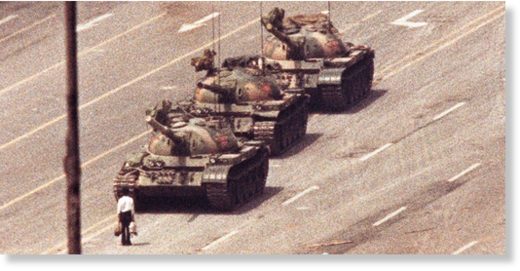
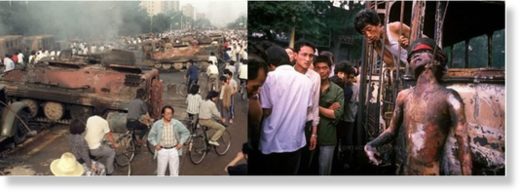
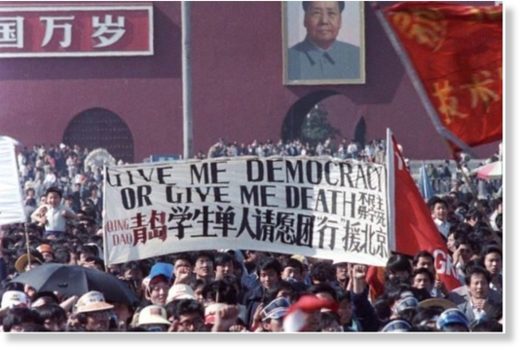
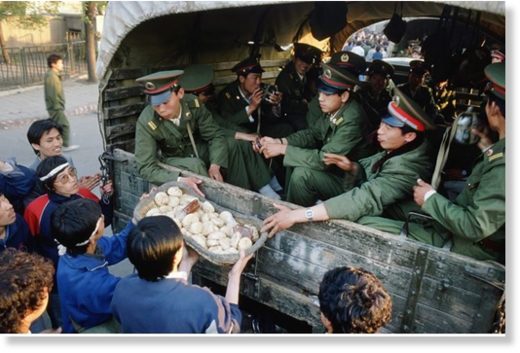
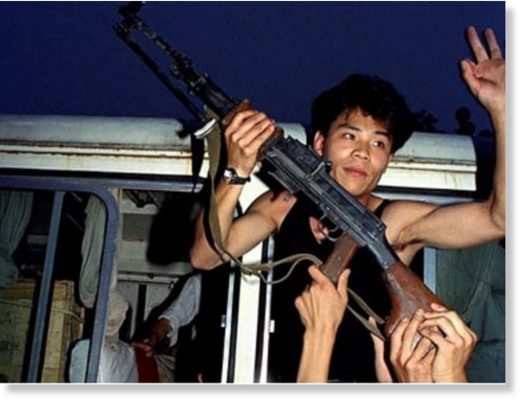



Geen opmerkingen:
Een reactie posten